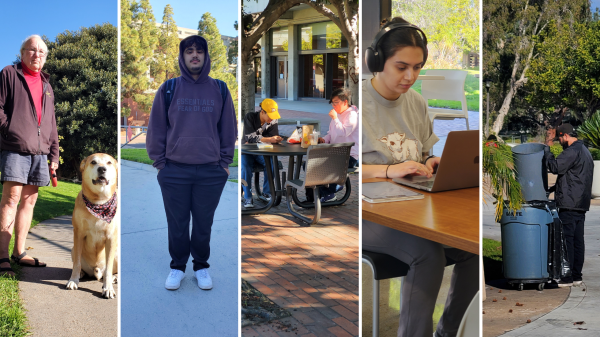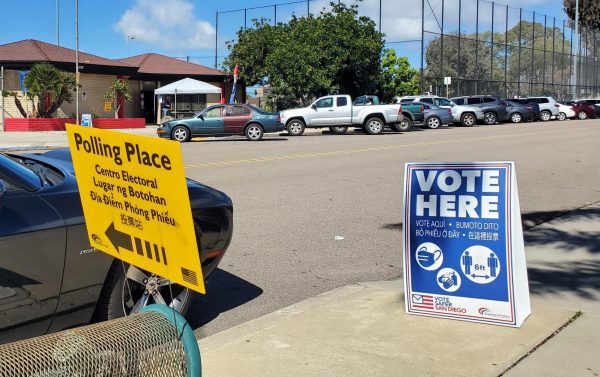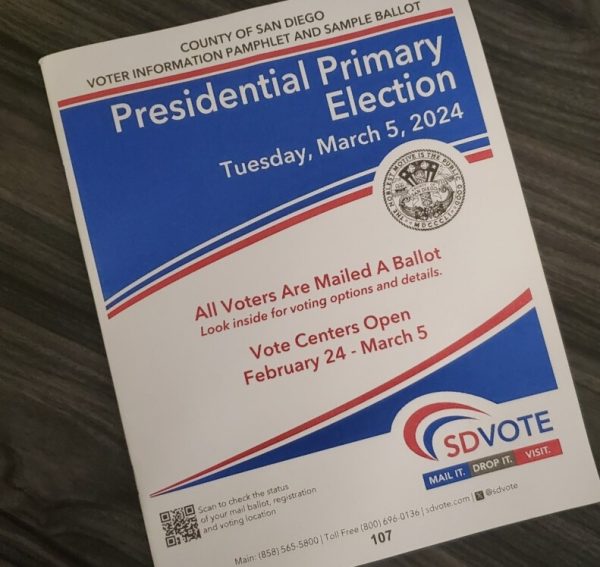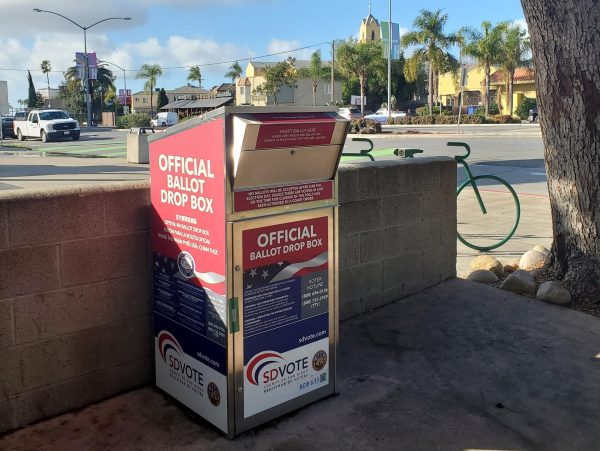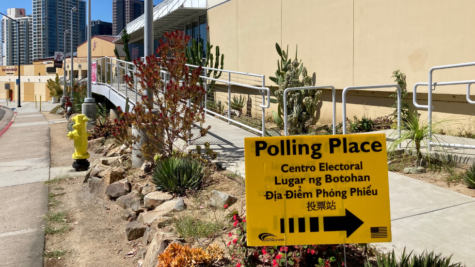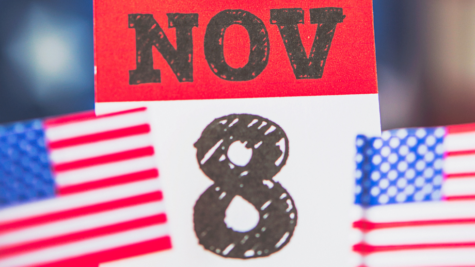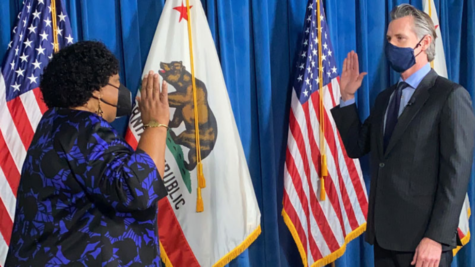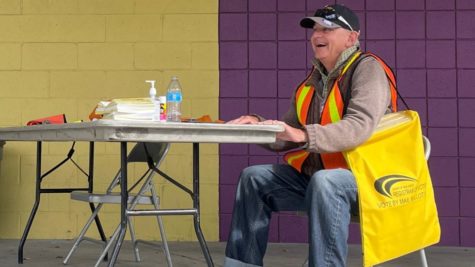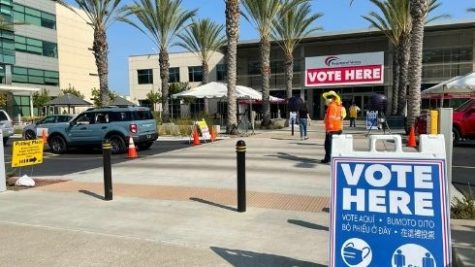Why do City College students vote the way we do?
Students, faculty weigh in on what factors into casting ballots

Luis E. Buendia, a technical inspector at the polling location near Harry West Gym, holds “I Voted” stickers in preparation for voters on Sept. 14, 2021. Photo by Kathy Archibald/City Times Media
November 5, 2022
Nicolette Penaloca, a cosmetology student at San Diego City College, is one of many students whose vote will be counted in the midterm election in November.
Although Penaloca, who on a recent Tuesday was working on various wigs in the V Building’s campus salon, does not belong to any particular political party, she generally votes with the Democrats.
“I look up the person I’m voting for on Google and view their stance on things like education,” Penaloca said.
Voting has been called essential to a well-functioning democracy, but often very few people have the time or the attention span to do extensive research on who or what they’re voting for.
So, what subtle psychological forces play a part in our voting decisions?
During the year of an election, campaign ads flood TV screens, phones buzz from targeted texts or surveys, signs line busy city streets and the mailbox is filled with political flyers.
The total cost of 2022 state and federal midterm elections is projected to exceed $16.7 billion, according to a new analysis by OpenSecrets, a nonpartisan nonprofit research group that tracks money in U.S. politics.
But one political scientist at Columbia University, Don Green, has done extensive research on how candidates have for decades spent a lot of money on these ads.
His finding: Ultimately, they have little, if any effect, on voter behavior.
Green’s findings echo a podcast with Jon Krosnick, produced a month before the 2020 election won by Joe Biden.
Krosnick, director of the Political Psychology Research Group at Stanford University, said there are specific psychological forces at play when people decide whether to vote and whom to vote for.
He identified “issue people,” which are propelled by certain issues like gun control, abortion, homelessness, and racial inequality. Those individuals vote for the person that aligns with their point of view.
“We’re used to thinking in surveys about the general public in America, but what we’ve learned is it’s also important to think about little groups of people who are passionate about particular policy issues,” Krosnick said in the podcast.
Another issue in voter engagement is the type of election.
In 2020, San Diego City College was recognized for having 50-59% voter participation or higher in the All In Campus Democracy Challenge, an initiative of the nonprofit Civic Nation.
The campus report on City College noted that the campus’ 57.4 percent voting rate increased 12% from 2016, but it was still lower than the national average of 66%.
But that was a presidential election year.
“Midterm elections usually have far less turnout than the general presidential election,” wrote Nicholas Boushee, a Professor of Political Science at San Diego City College, in an email to City Times. “Usually at about 30-35% of eligible voters, and even less for younger 18-24.”
If you have not yet voted, here are a number of resources you can use to guide your decision.
To view the official San Diego County voter’s guide and find your polling place, click here. An audio stream of the local candidate statements and measures is available on Soundcloud.
The Rose Institute of State and Local Government has debuted the student-produced Video Voter Guide, a nonpartisan resource for California voters to research the propositions on their 2022 ballots.
Voters can also register through Election Day in person or at sdvote.com.
To register in California, you must:
• be a United States citizen
• be a resident of California
• be at least 18 years old or older on Election Day
• not be currently serving a state or federal prison term for the conviction of a felony
• not be currently found to be mentally incompetent to vote by a court
The California Secretary of State’s office shared more details in a video from 2020.



